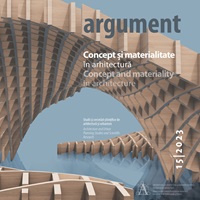Cartarea percepției. Abordări inovatoare de cartografiere digitală ca metode de investigație urbană
Mapping perception. Innovative digital mapping approaches as urban investigation methods
Author(s): Maria Boștenaru Dan, Adrian IbricSubject(s): Architecture, Physical Geopgraphy, Maps / Cartography, Sociology of Art, History of Art
Published by: Editura Universitară “Ion Mincu”
Keywords: psycho-geography; rapid visual screening; walking tour; story map;
Summary/Abstract: This paper presents translation methods of innovative mapping approaches, from paper-based techniques from historical periods to the digital realm for 3 case studies: Bucharest, Lisbon and Rome. Such paper-based techniques are the 18th century’s city map of Rome (by Giambattista Nolli), the 1950s-60s psycho-geographical maps developed by situationists (Guy Debord) and novel visual layouts from architects and urban planners (Kevin Lynch, Saverio Muratori). A previous mapping developed by Bostenaru and Panagoupoulos (2014) of the 18th century Lisbon earthquake, based on a chronicle azulejos engraving of the event, is also considered as a base point for a more modern perception visualization of this location. Digital techniques include story maps and layered mapping. Several story maps types were investigated for walking or cycling tours. These kinds of tours are a method of investigation, more suitable in architecture than in geography, as reviewed for Rome. Photography is another such instrument and the path taken in the story map is suitable for this. The charted buildings span from 20th century heritage, to sites relevant for the effects of earthquakes, the latter for Bucharest and Lisbon. The Rapid Visual Screening method (RVS) focuses on the structural material in Bucharest, while heritage habitat approaches emphasize the role of green materials, for Lisbon and Rome. Innovations in the paper maps as well as scenario thinking (Helmuth Kahn) permit differentiating between emblematic and common buildings, which can be achieved digitally through story maps. As the example of Lisbon shows, a further step may be creating VR and 3D models or video content. In conclusion, these story map tools are useful to investigate layers of the city, for writing urban places.
Journal: Argument
- Issue Year: 15/2023
- Issue No: 15
- Page Range: 209-232
- Page Count: 24
- Language: English, Romanian

